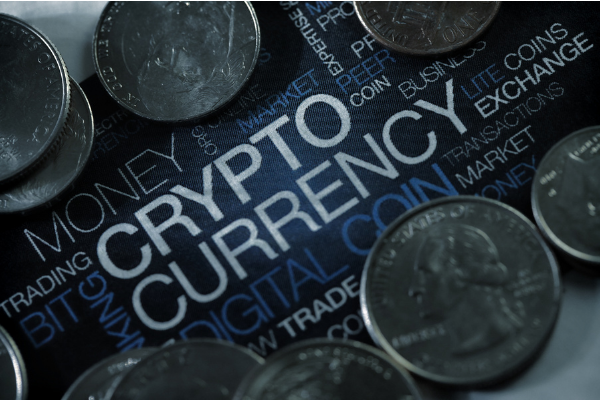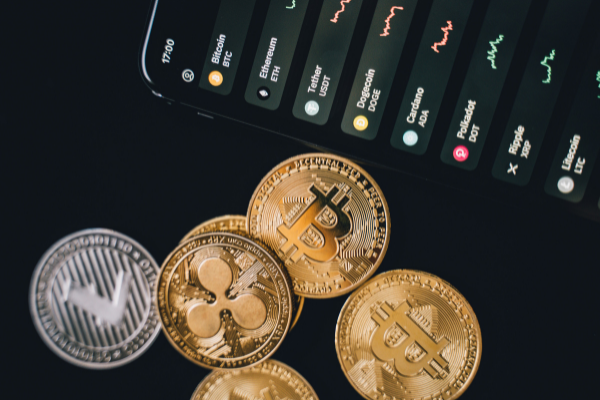Table of Contents
In the previous units we have seen in depth the parts that make up a Blockchain and its operation, as well as the special features it possesses, providing it with unique qualities that are already beginning to be used by many companies in different sectors.
GOALS.
The objectives of this unit are:
– To know the origin, characteristics and ecosystem of cryptocurrencies.
– To know the solutions that can bring the use of Blockchain in different sectors within banking.
– To learn how the health sector uses the Blockchain to improve many of the branches that form it and in which others can help to improve.
– Understand the role Blockchain plays in the transportation and logistics sector, as well as learn about future implementations in the sector.
– Learn how the Blockchain is changing the way information is stored in the cloud and the benefits of its implementation.
– Learn how the Blockchain is giving a new impetus to the collaborative economy.
– Learn about the different implementations that the military industry is giving to the Blockchain.
– Understand the use that many companies can make of the Blockchain to improve their loyalty rewards programs and benefits.

CRYPTOCURRENCY
Throughout the course we have been using Bitcoin as an example to explain many of the functions and mechanisms of the Blockchain, so we already have more or less an idea of what a cryptocurrency is. However, at this point, we will try to delve even deeper into this sector to get a broader perspective of the idea behind this economic revolution.
A cryptocurrency can be defined as a digital medium to which a certain value is assigned and which can be used as an exchange. These types of currencies use cryptography to validate and protect all their transactions. Cryptocurrencies that have a real equivalent value, or that can be used as a real currency, are known as “convertible”, with Bitcoin being the most obvious case of a convertible currency.
The financial crisis as a trigger for Cryptocurrencies birth
The money we use today, fiat currency, is issued as legal tender by our governments and is controlled by them and the banks that manage its supply, issuance and distribution. It is usually good enough for us to use on a daily basis, as long as we trust the governments and the banks.
Throughout history, and even today, we have seen examples of governments hyper-inflating their currency, or banks withholding money from families to avoid losses in the millions. In addition to this type of act, it can also be very inefficient, for example, when banks do not make an urgent international transfer during weekends because they do not operate during that period.
It was just after the financial crisis of 2007/2008, when Satoshi Nakamoto created Bitcoin, which he described as “a point-to-point electronic cash system“. The first block in the Bitcoin blockchain included a message:
“The Times 03/Jan/2009 Chancellor on brink of second bailout for Banks.”
The creation of Bitcoin was probably intended to strike a blow to the current banking system.
After the effects of the financial crisis, many banks were unable to stay afloat and had to rely on government bailouts to survive, using taxpayers’ money which was all the more galling for many as they themselves had caused the crisis. Many of the original supporters of cryptocurrencies were very much against the way in which governments engage in printing money to try to save the economy due to the fact that, in doing so, they were devaluing the money that people had and in turn, were putting control in the hands of politicians.
With the birth of Bitcoin, many began to see a new path to a world where people were in control of their own money.
To all this, we must add the rise of news where it was reported that large Internet companies were selling their users’ data for huge profits, so we began to have the initial ingredients of a revolution where idealists were already imagining a world in which citizens were sovereign individuals, people who had total influence over our money and our privacy. From this point the idea gradually spread.
Main characteristics of cryptocurrencies
Let’s look at some advantages and solutions that cryptocurrencies may be able to provide through their decentralized nature:
– Eliminate money printing: Governments have central banks, and central banks have the ability to print money when faced with a serious economic problem as happened in 2008. This process is also called quantitative easing. By printing more money, a government may be able to bail out debt or devalue its currency. However, this approach is considered by many economists as putting a band-aid on a broken arm. Not only does it rarely solve the problem, but the negative side effects can also sometimes outweigh the original problem.
For example, when a country like Iran or Venezuela prints too much money, the value of their currency drops so much that inflation skyrockets and people can’t even afford to buy everyday goods and services, their money loses all value. Most cryptocurrencies have a limited and fixed amount of coins available. When all those coins are in circulation, a central entity or the company behind the blockchain has no easy way to create more coins or add to the existing supply.
– They give people control over their own money: With traditional money, people deposit all their control to central banks and the government. These, in certain circumstances, can freeze accounts and deny access to funds. Some governments can even abolish legal tender bills as India did in 2016. With cryptocurrencies, the only people who have access to the funds are the people who have the private keys to the wallets.
– Elimination of third parties: one of the GOALS of cryptocurrencies and Blockchain technology is to try to create a much more efficient and faster asset transfer system than we have now. Currently, when we swipe our credit card when we buy something, there can be several intermediaries that are part of the transaction. These exist to ensure that we have the ability to make the payment and the merchant has the ability to accept the payment. However, that verification process comes at a cost to merchants in the form of credit card payment processing fees.
– Low transaction fees: Related to the previous point, the mere fact of removing a third party from the transaction equation helps fees to be drastically reduced, with many cases being able to be zero. However, not all cryptocurrencies have zero transaction costs due to different reasons, although, either way, they are still much lower fees than what we find in the methods currently available for traditional money.
– Helps people without access to means of payment: A large part of the world’s citizens do not have access to payment systems such as banks. Cryptocurrencies aim to solve this problem by spreading digital commerce around the world so that anyone with a cell phone can have the option to make payments.
– Transactions are irreversible: Once a transaction is confirmed, it cannot be reversed by anyone in the full spectrum of its meaning, there is no going back. This has a positive but also a negative side, since, if we send our money to the wrong address, we depend on the goodwill of the recipient to return the funds.
– Only pseudonyms are used: The identities of the users making the transactions or holding the accounts are not linked. The most that can be achieved is to analyze the flow of transactions, although this does not necessarily mean that it is possible to connect the real identity of the users with the addresses they have.
– Fast and borderless: Transactions are made almost instantaneously and are confirmed in a matter of minutes. Because the network is composed of a global network of computers that are located in different parts of the world, it does not matter from where the transaction is made, whether to a person living in your neighborhood or to someone on the other side of the planet.
– Security: All funds available in the wallet are encrypted in a public key system, so only the person who has the private key can unlock the account. As we have already seen, this feature makes it almost impossible to break this security scheme.
– No authorization required: You do not have to ask for permission or receive any authorization from any administration or entity in order to use cryptocurrencies. You only need to download and install a free software. Once installed, you can receive and send the cryptocurrency in question instantly without anyone being able to prevent or control it.
– Anytime: Transactions can be made at any time without depending on schedules, holidays or any other event that may delay our transaction both at the origin and at the destination.
Exchanges
Exchanges or cryptocurrency exchanges are online platforms where we can buy cryptocurrencies or exchange them with each other. They would be the equivalent of the classic stock exchange or currency exchange centers, for example.
Within these exchanges there are different types depending on a series of characteristics:
1. Traditional exchanges
This type of exchange works in a very similar way to the stock exchanges we know where cryptocurrencies are traded according to their prices.
– Normally, in these exchanges a commission is charged for each transaction that takes place.
– In some exchanges only cryptocurrency exchange is allowed, however, there are others where you can make use of fiat currency such as the euro, dollar or Chinese yuan, to buy cryptocurrencies. Some examples are Binance, Kraken, GDAX, Bitfinex or Poloniex.
– These types of exchanges can be centralized or decentralized. In the former, there is an intermediary who is in charge of both supporting all customers by solving any problems they may have and maintaining the proper functioning of the entire platform. In the latter, called DEXs, on the other hand, there is no intermediary and their trading is based on smart contracts. Another big difference is that decentralized exchanges do not require as much information from the user as centralized exchanges do, since the latter allow trading with fiat currencies.
2. Cryptocurrency brokers
These exchanges are usually based on websites that serve the function of currency exchange sites at an airport.
– In this case, it is a broker who sets a price for the cryptocurrencies to which he adds a commission.
– The exchange is not between buyer and seller, but between a buyer or seller and the broker. Coinbase, Cash App or Shapeshift are examples of this type of exchange.
– It is usually the simplest solution for new users.
– Due to commissions and the fact that it is the broker itself who sets the price, a slightly higher price is usually paid for exchanges.
3. Direct trading platforms
These platforms offer direct point-to-point trading between buyers and sellers.
– Direct trading platforms do not use a fixed market price. In this case it is the users themselves who set their buying and selling prices. The platform only serves as a channel for the meeting between sellers and buyers.
– There are exchanges of this type that are intended for very large buyers and sellers and others for average buyers or sellers, although logically, most customers are in the second type.
– Many decentralized exchanges belong to this type.
– This type of exchange may be the only solution in some regions, however, due to the lack of reliable measures such as smart contracts used by DEXs, it is necessary to perform a series of studies as exhaustive as possible on whether the platform is trustworthy or not. This is the most important measure to take, but not the only one. It is also advisable to check, with the help of other users’ ratings, whether the person with whom we are going to carry out the transaction is trustworthy or not. Finally, we can use tools such as Coinmarketcap.com to make sure that the price, both for buying and selling, is within the market.
– An example of a decentralized peer-to-peer direct trading platform is AirSwap.io (here DEX facilitates direct exchanges between users through smart contracts and therefore may not require information). Another example of a peer-to-peer exchange, this time centralized, that facilitates fiat and crypto exchanges is LocalBitcoins.com.
4. Cryptocurrency funds:
These funds are made up of a certain amount of cryptocurrencies and which are managed and administered by professionals, allowing us to buy and hold them in such funds.
– An example of these funds is GBTC.
– This type of fund allows us to invest in cryptocurrencies without having to buy or store them directly.
– In a fund you cannot use cryptos as money, they only have a strictly investment use.

The altcoins
Today, there are thousands of cryptocurrencies and many of them were inspired by or even directly extracted from the Bitcoin code. Collectively, these descendants of Bitcoins are known as “altcoins” or alternative cryptocurrencies.
While some cryptocurrencies promote improved features with respect to Bitcoin (speed, security and privacy), others were created for simple fun and entertainment, such as Dogecoin. Others, however, were created with other intentions that are not so fun, seeking to deceive buyers by making them lose part or all of their investments.
Within these altcoins, there are some that do have the backing of the community and with a series of characteristics that place them as a fundamental part of the crypto world. Let’s take a look at some of them:
Ether (ETH):
In the cryptocurrency market, the Ethereum network with its Ether coin is the first among other Bitcoin alternatives. As we saw, it is a digital platform that operates through a decentralized system for the execution of smart contracts. Ether ranks second in the list of digital currencies. It was launched in 2015 and allows developers to design decentralized software and applications within the Blockchain network.
Ripple (XRP):
It was launched in 2012. It is intended to enable payments immediately and at very low cost ($0.0004) worldwide. This type of promoted usage has made it particularly relevant for banks looking to settle cross-border transactions using the Ripple network.
Unlike Bitcoin, XRP does not require mining, so there are many in the crypto community who debate whether XRP can qualify as a cryptocurrency.
Litecoin (LTC):
Founded by Charles Lee in 2011, Litecoin is very similar to Bitcoin and was created with the intention of improving upon it. Where Bitcoin processes one block every ten minutes, Litecoin processes one block every 2.5 minutes, allowing for faster transaction confirmation.
The litecoin system also uses a different proof-of-work (PoW) system than Bitcoin. It uses “scrypt” PoW, a system that prevents the use of specialized ASIC chips, in order to allow more people to be Litecoin miners.
Monero (XMR):
Monero is one of the most secure and private cryptocurrency networks that was created in 2014. This open source virtual currency has been created and driven by a crypto community to provide a single digital currency network. Privacy in the network is possible due to a technique called “ring signatures”. This allows users to remain secure and anonymous from any third party, offering advanced technology to the digital currency market.
Binance Coin (BNB):
It was founded in 2017 and has quickly gained popularity for its versatility in the cryptocurrency market. It is a token used for many purposes on the Binance platform which offers an exchange platform where different cryptocurrencies can be traded.
This token can also be used for payments for different goods and services. Because it is an exchange platform with unique features, it has become the largest exchange in the world.
EOS (EOS):
It was launched in 2017 as an ERC20 token based on the Ethereum Blockchain. A year later it became the native currency of the Blockchain platform called EOS.IO and is also known as “Ethereum Killer”.
It is designed to be a very easy way in which developers can create decentralized applications. What this means is that without the need for a lot of code, an application can be created easily, and that is the revolutionary thing behind the EOS platform. Unlike Ethereum, transactions just for validation on EOS have no cost.
Bitcoin Cash (BCH):
Bitcoin Cash is a hard fork of Bitcoin and was created in August 2017 after the community debated for almost a year. The fork was created because a certain group of developers wanted to increase the block size of Bitcoin. They also defined that anyone holding Bitcoins would get the same amount of coins from the forked chain.
In other terms, Bitcoin Cash is an upgraded version of the Bitcoin core software. It is faster, cheaper and more secure to use. It is suitable for small and large amounts of transactions. In addition, Bitcoin Cash transactions are faster than the original Bitcoin core having, also. more transaction capacity.
Tether (USDT):
This is a stablecoin. A stablecoin is a cryptocurrency which is linked to a legal tender such as the Euro or the Dollar. These are issued by centralized companies that keep them stable, either by putting a guarantee or through some kind of algorithm that manipulates the supply of the stablecoin, depending on the demand.
These types of stable currencies allow exchanges to create fiat currency pairs without actually accepting fiat. For example, you can have a BTC/USDT trading pair that simulates the BTC/USD market without the need for regulation.
As of today, Tether supports four different currencies: the US dollar (USDT), Chinese yuan (CNHT) and euro (EURT), as well as a stablecoin backed by an ounce of gold (XAUT).
First launched with USDT in 2014 Tether Limited, the company’s idea was to make government money more compatible with newer crypto assets, which trade 24/7 in an active global market.
Each USDT token is redeemable for its corresponding U.S. dollar held in custody by Tether Limited. The total value of all USDTs is said to equal the reserves held by the company.
Once a USDT is newly minted and issued, it can be transferred, stored and spent by a variety of businesses (exchanges, wallets, financial services) and individual traders looking to avoid the sometimes extreme volatility of cryptocurrency markets.
These are just a small representation of a large number of other cryptocurrencies also with renown within the crypto world such as: Cardano (ADA), Tron (TRX), Stellar (XLM), Theta (Theta) or Chainlink (Link).
New coins are constantly being added to the list of altcoins, but they rarely have much relevance or bring anything new to the table. However, in June 2019, Facebook announced the creation of Libra, a cryptocurrency proposed to allow users to send and receive money through the social network with the support of more than 100 companies and which would be available in 2020. Undoubtedly, if it ends up being launched, it would become one of the most influential and widely supported of all existing cryptocurrencies.





